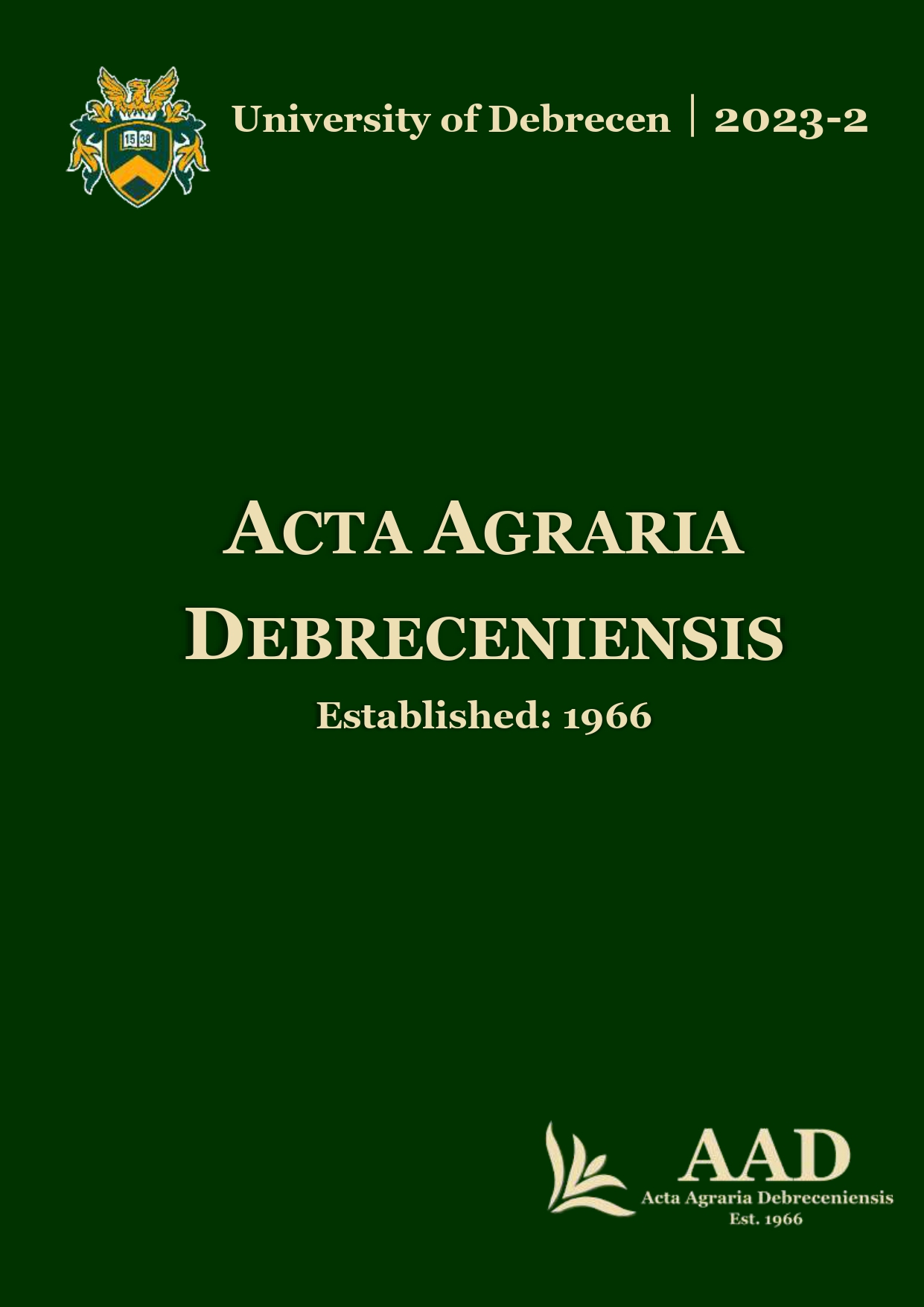Global tendencies in turkey meat production, trade and consumption
Authors
View
Keywords
License
Copyright (c) 2023 by the Author(s)

This work is licensed under a Creative Commons Attribution 4.0 International License.
How To Cite
Accepted 2023-07-12
Published 2023-12-01
Abstract
Global meat production totaled 357 million metric tons in 2021. Poultry accounted for nearly 40 percent of total meat production, including 4.2 percent of turkey meat (5.8 million tons). Global turkey meat production has stagnated between 5.5 and 6.0 million tons since 2008, in contrast to the monotonous upward trend in poultry meat production. Turkey meat production generally occurs under well-integrated conditions, with some large multinational companies and smaller, regional players. The industry is exposed to a number of factors that affect supply and demand, including disease outbreaks, government regulations, consumer preferences, and economic conditions. Key factors driving market growth include population growth, urbanisation, and increasing consumer awareness of the health benefits of turkey meat over other meats. In addition, advances in processing, packaging, and distribution technology have improved turkey meat's shelf life and availability, further fueling growth. Turkey farming and production are mainly concentrated in certain regions such as North America and Europe, where industrialisation has a long history and infrastructure is well developed. Turkey meat production in these areas is sufficient to meet local demand and is often exported to other regions. However, in other regions where turkey farming is less developed, such as parts of Asia and Africa, turkey meat production is insufficient to meet local demand. This type of meat must be imported from other regions. The degree of self-sufficiency in turkey meat depends on the level of development of the sector in each region. This study investigates the factors affecting global and regional markets for turkey meat and systematised the development of global consumption, production, and trade of turkey meat.
References
- Askerov, P.F.–Rabadanov, A.R.–Kibirov, K.G.–Tolparov, E.B.–Bondarenko, O.V.–Khairbekov, A.U. (2021): Role and Importance of Turkey Meat Production in Poultry Farming in Russia: Prospects for Further Development. Entomology and Applied Science Letters, 8(3), pp. 15–20. doi: 10.51847/IE9jQz8ugz
- Austin, A. (2021): Reviewing COVID-19’s impact on turkey in 2020. URL: https://www.wattagnet.com/articles/42122-reviewing-covid-19s-impact-on-turkey-in-2020 (Download: 2023.03.28)
- Bojovic, M.–McGregor, A. (2023): A review of megatrends in the global dairy sector: what are the socioecological implications?. Agric Hum Values 40, pp. 373–394. doi: 10.1007/s10460-022-10338-x
- Brant, A. (1998): A brief history of the turkey. World's Poultry Science Journal, 54(4), 365–373. doi:10.1079/WPS19980027
- Çakır, M.–Boland, M.A.–Wang, Y. (2018): The Economic Impacts of 2015 Avian Influenza Outbreak on the U.S. Turkey Industry and the Loss Mitigating Role of Free Trade Agreements. Applied Economic Perspectives and Policy, 40(2), pp. 297–315. doi: 10.1093/aepp/ppx027.
- Canadian Turkey (2022): Turkey Nutrition. URL: https://www.dindoncanadien.ca/media/Turkey-Nutrition-101-v2_website-PDF.pdf (Download: 2022.07.08)
- FAO (2023): Food and Agriculture Organization of The United Nations Statistics Division database. URL: http://www.fao.org (Download: 2023.02.04.)
- Herkel, R.–Galik, B.–Biro, D.–Rolinec, M.–Simko, M.–Juracek, M.–Arpasova, H.–Wilkanowska, A. (2016): The effect of a phytogenic additive on nutritional composition of Turkey meat. Journal of Central European Agriculture, 17(1), pp. 25–39. doi: 10.5513/JCEA01/17.1.1664
- Karnai, L.–Szűcs, I. (2018): Outlooks and Perspectives of the Common Carp Production, Annals of the Polish Association of Agricultural Economists and Agribusiness, 20(1), pp. 64–72. doi: 10.5604/01.3001.0011.7230
- Khatko, Z.N.–Shirokova, A.S. (2022): Prospects for the production of culinary products from turkey meat (a review). New Technologies. 18(1) pp. 93–105. (In Russ.) doi: 10.47370/2072-0920-2022-18-1-93-105
- Lasley, F.A.–Henson, W.L.–Jones Jr., H.B. (1985): The U.S. Turkey Industry. Technical Report. National Economics Division, Economic Research Service, U.S. Department of Agriculture. Agricultural Economic. Washington, D.C. 20402.
- Marangoni, F.–Corsello, G.–Cricelli, C.–Ferrara, N.–Ghiselli, A.–Lucchin, L.–Poli, A. (2015): Role of poultry meat in a balanced diet aimed at maintaining health and wellbeing: an Italian consensus document. Food & Nutrition Research, 59, 27606. doi: 10.3402/fnr.v59.27606.
- Mohan, J.–Sharma, S.–Kolluri, G.–Dhama, K. (2018): History of artificial insemination in poultry, its components and significance. World's Poultry Science Journal, 74(3), pp. 475–488. doi:10.1017/S0043933918000430
- Riccardi, B.–De Paoli, T.–Resta, S. (2020): Proposal innovative probiosomial technology for strengthening of the immune system. Pharmacophore, 11(3), pp. 38–46.
- ROSSTAT URL: https://agromics.ru/novosti/reyting-indeyka/ (Download: 2023.02.04)
- Speller, C.F.–Kemp, B.M.–Wyatt, S.D.–Monroe, C.–Lipe, W.D.–Arndt, U.M.–Yang, D.Y. (2010): Ancient mitochondrial DNA analysis reveals complexity of indigenous North American turkey domestication. Proceedings of the National Academy of Sciences of the United States of America, 107(7), pp. 2807–2812. doi: 10.1073/pnas.0909724107.
- Szőllősi, L. (2021): Current State and Future Prospects of the Egg Sector – an International Outlook. Agriculturae Conspectus Scientificus, 86(2) pp. 95–105.
- Szűcs, I.–Vida, V. (2017): Global tendencies in pork meat - production, trade and consumption. Applied Studies in Agribusiness and Commerce, 11(3-4), pp. 105–112. doi: 10.19041/APSTRACT/2017/3-4/15.

 https://doi.org/10.34101/actaagrar/2/12594
https://doi.org/10.34101/actaagrar/2/12594